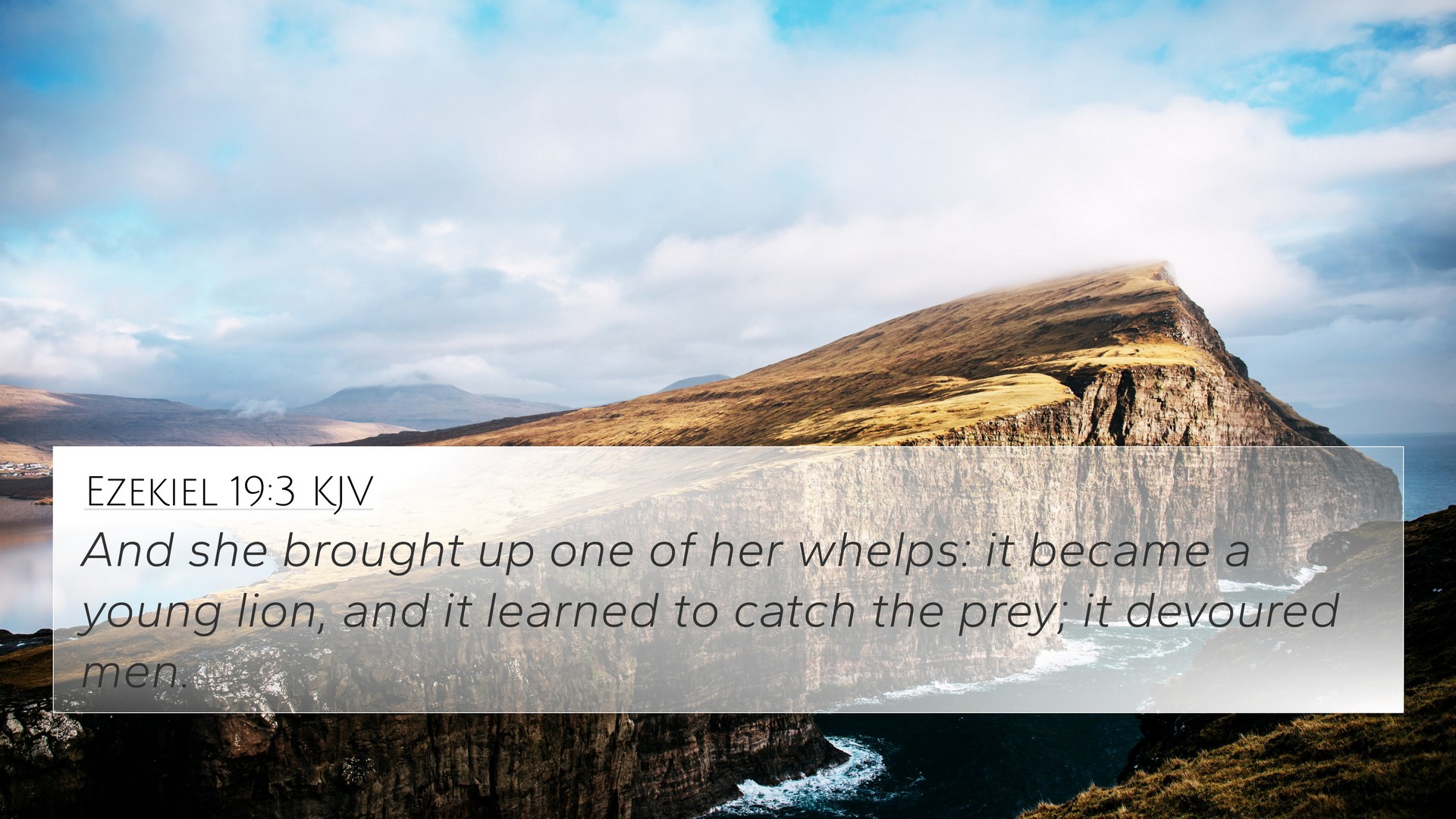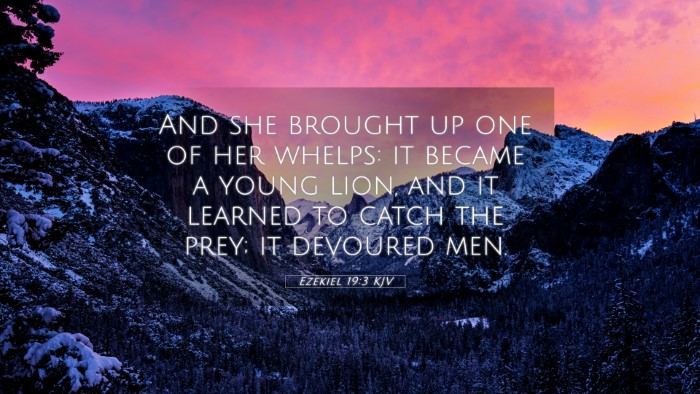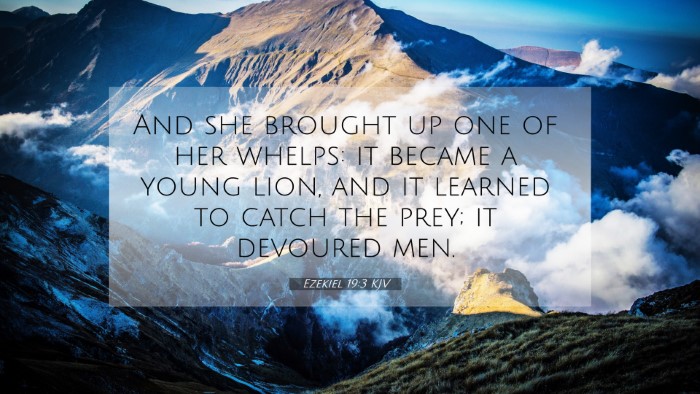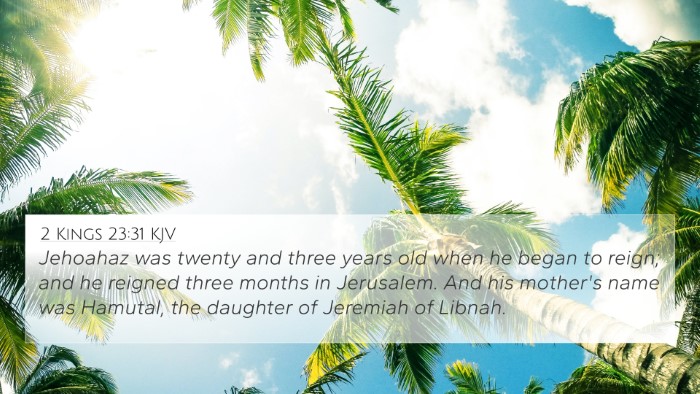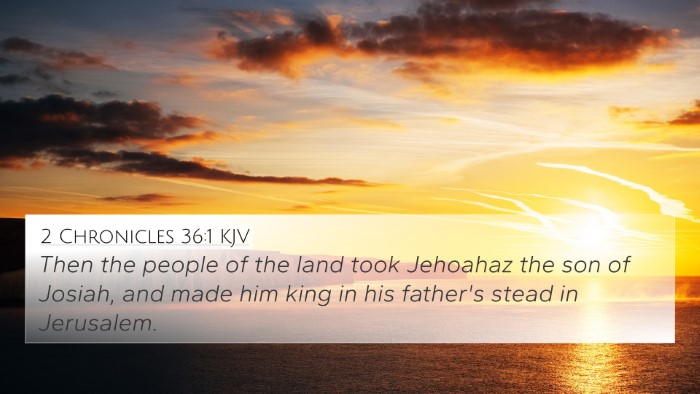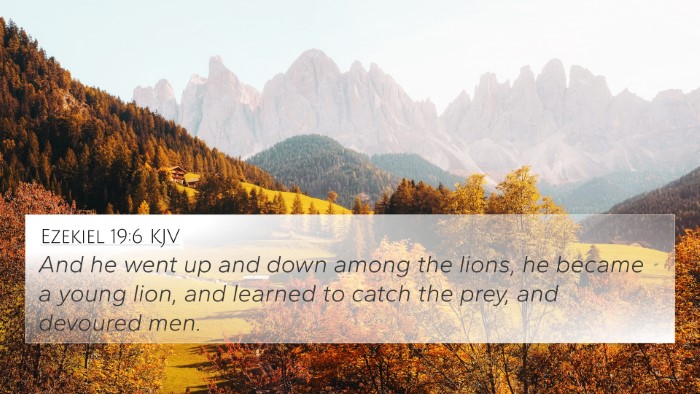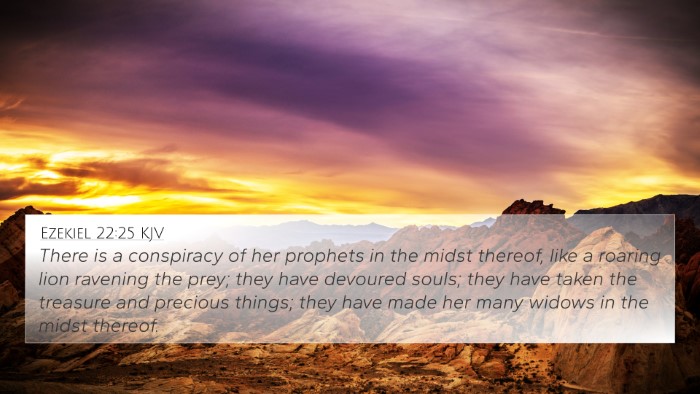Ezekiel 19:3 - Summary and Interpretation
Bible Verse: Ezekiel 19:3
"And she brought up one of her whelps; it became a young lion, and it learned to catch the prey; it devoured men."
Understanding Ezekiel 19:3
This verse is a prophetic lamentation that uses the metaphor of a lion to depict the rise and fall of leadership in Israel, particularly during turbulent times. It speaks to the nurturing of strength and leadership, as indicated by the "young lion" which symbolizes either a royal descendant or a leader who has the potential to guide the nation.
Commentary Insights
-
Matthew Henry:
Henry interprets the "whelps" as the offspring of the leadership, indicating that they grow to embody the character traits of their forebears. The mention of the lion's capability to "catch the prey" symbolizes the strength and dominance that the leaders are expected to exhibit. However, the devastation described in "devoured men" serves as a harrowing reminder of the consequences of unchecked power.
-
Albert Barnes:
Barnes emphasizes that this verse reflects God's judgment on Israel's leadership. The young lion is perceived as a representation of the kings of Judah who initially showed promise but ultimately strayed from their purpose. The imagery of devouring men suggests the destructive nature of failed leadership and its direct impact on the people.
-
Adam Clarke:
Clarke suggests that the "whelp" signifies youth and the potential for growth into leadership. The process of learning to catch prey indicates the training and preparation necessary for leadership roles. The destruction of men signifies the tragic outcomes when leaders misguide their nations.
Connections between Bible Verses
Ezekiel 19:3 echoes various themes found in other Scriptures, calling attention to the dynamics of leadership, judgment, and the consequences of neglecting divine guidance. Below are key cross-references that relate to this verse:
- Jeremiah 12:10: Illustrates the idea of shepherds destroying the vineyard, similar to leaders victimizing their people.
- Isaiah 5:29: Discusses lions as metaphors for powerful figures, drawing parallels to the image of strength in leadership.
- Proverbs 28:15: Highlights the destructive nature of wicked rulers and the plight of the populace.
- Micah 5:8: Uses similar language about leaders, echoing the themes of predation and survival.
- Genesis 49:9: "Judah is a lion's whelp," connects the symbolism of lions with the lineage of Judah.
- Hosea 5:14: Reflects on the consequences of misguidance by leaders as causing harm to people.
- Ezekiel 22:25-27: Further commentary on corrupt leadership and its impact on the nation.
- Matthew 23:37: Jesus laments over Jerusalem, paralleling the issues of failed leadership present in Ezekiel's message.
- Revelation 5:5: References the Lion of the tribe of Judah, completing the literary reference within the context of biblical leadership.
- 1 Peter 5:8: A call to be vigilant against predatory leaders, aligning with the themes of the young lion's predation.
Thematic Bible Verse Connections
The themes of Ezekiel 19:3 resonate distinctly with modern readers concerning leadership responsibilities. This verse serves as a dire warning against the abuse of power and highlights the loss suffered by the people when their leaders forsake their duties. The metaphor of the lion serves not only as a vivid image of strength but also suggests the duality of leadership, capable of nurturing or destruction.
Tools for Bible Cross-Referencing
To deepen your understanding of such connections between scripture, consider utilizing the following tools:
- Bible Concordance
- Bible Cross-Reference Guide
- Cross-Reference Bible Study
- Bible Reference Resources
- Comprehensive Bible Cross-Reference Materials
Conclusion
In Ezekiel 19:3, the prophetic imagery serves as both a reflection on past failures in leadership and a timeless warning for contemporary believers. Engaging with the broader connections through scriptural cross-referencing unveils a tapestry of biblical themes related to leadership, responsibility, and divine judgment. Recognizing the links between this verse and others enriches our understanding of God's intentions for His people and the expectations placed upon those in positions of influence.
